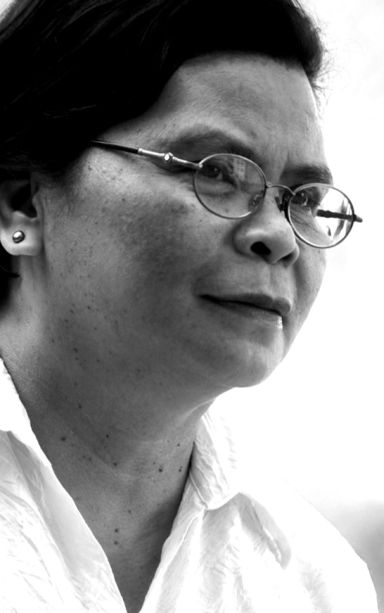
DELACERNA
May is National Heritage Month but is more popularly associated with fiestas everywhere from big towns to the barangays.
The fiesta culture is part of our heritage, but the focus is more on the food and hardly the continuing revival of the local traditions which should be part of the fiesta.
But even the banquets are mostly done by caterers and there is a kind of uniform pattern and representation of food.
Gone are the days when the local residents themselves prepared the food from the butchering of the pig or chickens to the making of the local delicacies.
The local culinary arts are vanishing.
The Flores de Mayo is also vanishing because there is lack of appreciation and loss of initiatives and leadership in continuing or reviving this beautiful tradition. It kept busy little girls, adolescent females and young adults focused on the Marian values especially during the summer season.
The Gabii sa Kabilin, now on its 11th year, has done much to help the communities revisit their heritage by opening museums and heritage sites to the public every last Friday of May (this year it will be on May 26).
This year the participating museums are given special attention to encourage museum visits throughout the year.
The Gabii sa Kabilin is a very good preparation for teachers handling the K to 12 course on local history and culture.
The newly renovated Casa Gorordo Museum gives its visitors a bird’s eye view of the history of Cebu City with focus on Parian through an audiovisual presentation.
It also makes the visitors interact with a few of the interesting moments of the development of Cebu.
A very interesting part of the preliminaries of the visit to the museum is the video on the Making the Mestizo House featuring the materials and the background of the roof — tiled houses or balay na tisa, and some social practices of the old times in relation to the parts of the house.
Centerpiece is the Casa Gorordo. The museum tour ends with the museum shop that sells books on Cebuano culture and history and locally made crafts, and the coffee shop where visitors can relax and have an extended talk after the museum tour.
With the focus on the museums, it is hoped that the Gabii sa Kabilin will encourage museums’ personnel to enliven the visits with interesting information and stories related to the museum and its contents.
One activity could be featuring the historical and cultural events that took place in the community where the museums are located.
In the previous years, a suggestion was brought up regarding a Baktas Rebolusyon, or tracing the revolutionary trail in the southern district of Cebu City but has not seen the dawn of its coming.
With the presence of many literary groups in Cebu City, there are readings of Cebuano poetry and performances of local theatrical forms. It is hoped that there will be public viewing of the best Cebuano films with a film discussion after the viewing.
For the information of everyone, the Gabii sa Kabilin opens at 6:00 p.m. to remind us that the evening starts with the Angelus and ends at midnight with an evening prayer. So to make summer vacation more meaningful, let us revisit our heritage before going back to school and make use of the
museums and heritage sites that abound us while studying.
* * *
As a student particularly in high school, I was always excited with the opening of classes because only of one thing: our textbooks for the next year.
In high school, the thickest book was the “Prose and Poetry” for our literature classes.
In first year, we had “Prose and Poetry for Enjoyment”; for second year, we had “Prose and Poetry for Appreciation”; third year, we had “Prose and Poetry of America”; and fourth year, we had “Prose and Poetry of England.”
It was so thick that most of us left them in our desks in our classroom; but it was my favorite textbook because it contained the best short stories, lyric and narrative poetry, essays, novels and dramas in English.
Textbooks then were repaired and given a new look after classes ended.
I was a working student in high school, and our main work during summer was to repair and clean the textbooks.
Repairing consisted of fixing dog-ear pages and torn pages. Rebinding was made for books with broken spines.
After repairing and cleaning, the textbooks are covered with thick brown paper then piled according to year level ready for distribution during enrollment.
In college, we had also books, but they were not covered and most of them were sold to us and the college library provided us with very good sources.
As a teacher, preparing for the opening of classes was indeed challenging, preparing the syllabus for the whole year or semester which varies every year, the activities per grading period as well as the culminating activities.
In UP Cebu High School, it was interesting to interview the new freshmen before they are enrolled.
Enrollment was similar to college enrollment. The only difference was they did not have to list down their subjects.
We always insisted that the students enroll themselves instead of their parents so that they will learn to do things by themselves.
Orientation programs were held either on the first day of classes or before.
There were orientations on the school policies, teachers, electives and a school tour.
One thing missing in school orientation programs is the history of the school — and this is vital.
Unfortunately, students get to know the history of their school only when it celebrates its golden, diamond jubilee or centennial.
Disclaimer: The comments uploaded on this site do not necessarily represent or reflect the views of management and owner of Cebudailynews. We reserve the right to exclude comments that we deem to be inconsistent with our editorial standards.




